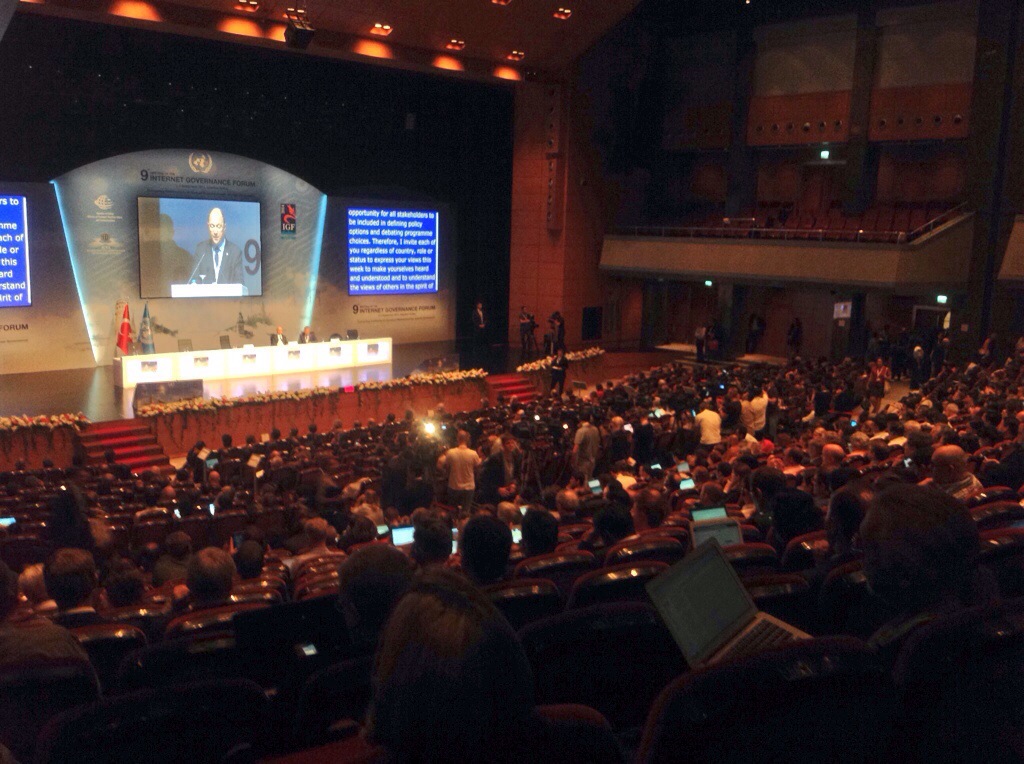ISTANBUL – One of the topics in the ninth Internet Governance Forum here in Turkey is the “digital divide” or just how to connect the world’s citizens who remain unconnected to the internet.
The dominant view in the IGF is to let the magic of “market forces” dictate the pace and direction of efforts to bridge the “digital divide”. Supporters of this view limit the role of the state as a mere provider of “incentives” for telcos who would take on the challenge or as source of funding in private-public partnerships.
State role
Many countries have invested heavily in establishing national broadband networks to connect their entire territories to the internet. Some are purely and entirely state initiatives, while others helped in a big way through infrastructure and funding. They did so due to the belief that a nation that has adequate and future-ready national broadband networks makes for a competitive people, economy and country.
Of all the G-7 club of highly-industrialized countries, only Canada has no national broadband network.
The countries with the fastest internet speeds today have national broadband initiatives, which are state-led.
Japan launched a National Broadband Initiative that aimed to connect underserved areas, and the e-Japan Strategy that sought to lower prices and raise speeds for end-users, especially households. The Japanese government poured $60-million for these efforts.
South Korea’s government started early in investing on a national broadband network and continues to lead the way:
As early as 1997, the Korea Communications Commission set a path for industry by coming out with national broadband goals: (1) Fiber connection for all big office and apartment buildings by 1997; (2) DSL or cable internet access for 30 percent of all households by 2000; (3) fast connections of 20 Mbit/s or more for 80 percent of all households by 2005.
In 2004, the government led a consortium to build a major infrastructure project called the Broadband Convergence Network (BcN). The project has since been extend.
In 2009, KCC announced plans to upgrade the national broadband network to enable it to offer 1 Gbit/s service by 2012. The government poured 1.3-trillion won for the effort, with the rest of the costs to be shouldered by telcos. It was also reported that the effort would generate 120,000 jobs.
Philippines and “market forces”
The Philippines is a prime example of the downsides of the belief in “market forces”, which some say is nothing but a prettified substitute term for “domination by Big Business”.
Telecommunications was, for the longest time, a monopoly of PLDT. Left on its own, PLDT deprived telephone services from the overwhelming majority of Filipinos and charged expensive rates on those lucky enough to have them.
The deregulation regime of 1995 opened the sector to competition. New players found their own spaces. Initially, the government and Big Business agreed to split the country into service areas. Phone lines started to be easier to get, but problems remain since the government allowed the telcos to charge so-called “interconnection fees”. Up to this day, interconnection agreements are still signed among telcos, with all of them passing on all or most interconnection fees to end-users. The result: high fees and rates, and dropped calls between competing telcos.
The telcos introduced CMTS or cellular mobile telephony services at very expensive rates. It was only after they responded to calls from consumers to provide prepaid services that a mass market was created. It took years before telcos responded to another call from consumers: provide cheaper and more affordable prepaid cards and load.
If not for consumers’ efforts, telcos would have opted not to continue with “unli” or “bucket” services. It was only later did they realize that what consumers’ wanted were also good for them.
While the the Philippines is now known as the world capital for social media use and for selfies, Filipinos achieved such feats not because of but in spite of substandard and unreliable telco services.
PLDT, back to its old ways
PLDT is said to be refusing to open its network to “peering” with other telcos. The goal of “peering” is to jolt internet connections by making accessing the web faster. Instead of routing traffic overseas, peering would allow routing most visited and locally-hosted websites locally. It makes perfect sense — but PLDT is not interested.
Unknown to many, foreign telcos are invested in Philippine telcos but there is no word on what they provide them except for funding. Japan’s NTT is with PLDT-Smart, while Singapore Telecom (Singtel) is connected with Globe Telecom.
Close to 20 years after the telecommunications deregulation law supposedly dismantled the PLDT monopoly, PLDT-Smart today remains the biggest: It gobbled up Digitel/Sun Cellular and CURE. Globe Telecom meanwhile acquired Islacom and Bayan. The Philippine telco players are down to basically two, from as many as five players 10 years ago.
The majority owners of PLDT-Smart are now more influential than ever: They also have controlling or considerable ownership of Meralco, TV5, BusinessWorld, Philippine Star and Philex Mining, among others.
Digital future
The many potential benefits of internet use and internet-based innovations go beyond technology and telecommunications. Education, health care, unemployment and other frontline government services are areas that benefit immensely from internet-based innovations.
Meanwhile, there are also new careers and new opportunities for both employment and entrepreneurship brought about by the explosion of internet use. Lest we forget, many businesses and industries are themselves turning digital, online and social.
Technology could really play an important in creating and expanding opportunities in a developing country such as the Philippines, where two-thirds of the 100-million population are eagerly waiting to be connected to the internet.
If only we have a visionary government that knows the role of technology, sets the direction, invests on a future-proof national broadband infrastructure and reins in on excesses of Big Business.
Acknowledgement: Thanks to the Southeast Asia Press Alliance for the grant that made possible this blogger’s attendance at IGF 2014.
